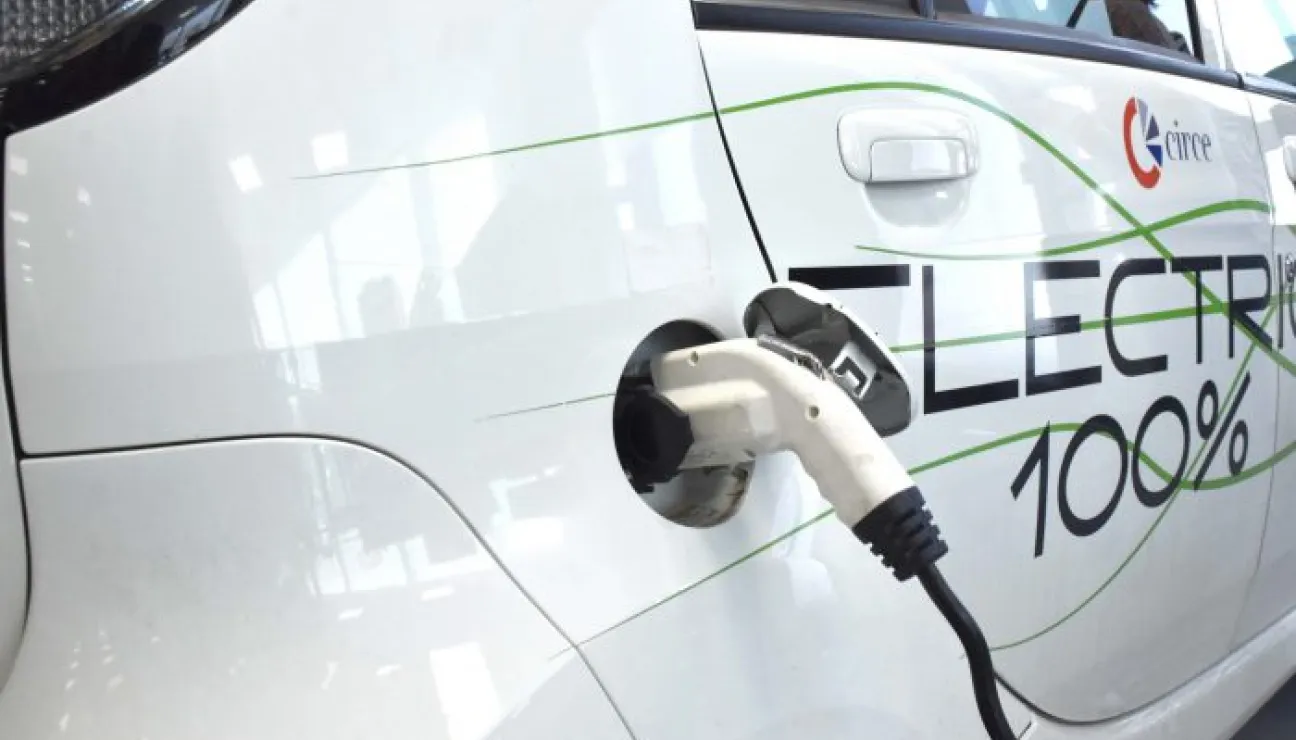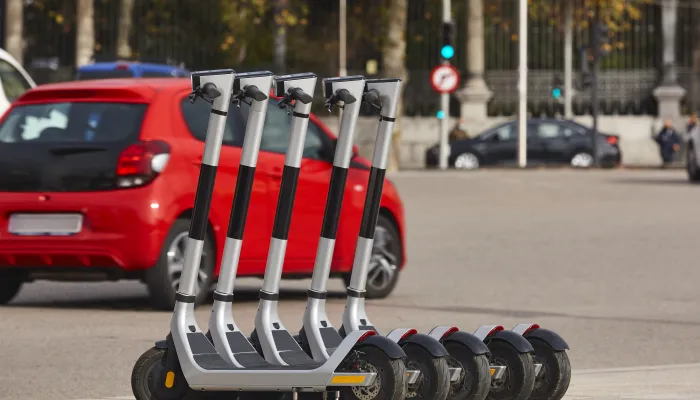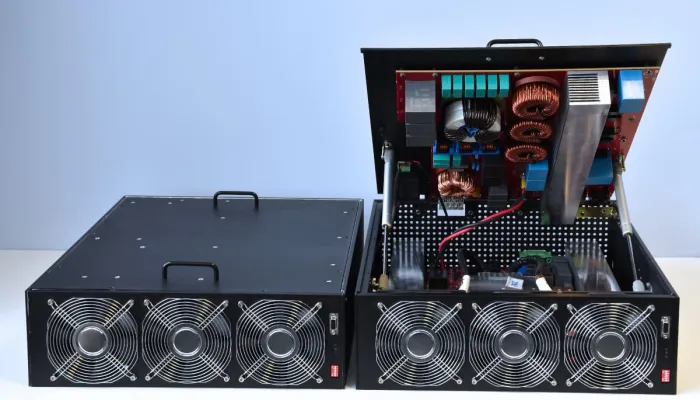The 9 energy trends that will shape 2022

1. Industry finds its formula to decarbonise
The European Union aims to be climate neutral by 2050. In other words, it has set itself the objective of having an economy with zero net greenhouse gas emissions. This goal is at the heart of the European Green Deal and is in line with the EU's commitment to increase global climate action in line with the Paris Agreement commitments. This is why the path towards decarbonisation will mark the steps of the business community this year.
A large number of industries have already started transition processes but there is still a long way to go and the lack of knowledge on how to move forward is a major challenge. In this sense, this year we will stop talking only about technologies to face this challenge in a global way, from the planning and analysis of the strategy. The keys to the path towards decarbonisation will be the commitment to zero net emissions, the scope 3 of the carbon footprint, neutralisation, renewable energies and electrification and the integral vision of the environmental challenges, among other aspects. All available technologies will attack this common goal depending on the process and context.
2. Energy prices will remain unstoppable
Although it is difficult to predict how energy prices will behave over the course of a whole year, everything points to the fact that energy costs will continue to give companies and households no respite, a handicap for the expected post-covida economic recovery. This prediction is due not only to the energy market, but also to the geopolitical and meteorological situation, which has a direct impact on market volatility. Thus, everything leads to the assertion that prices will rise in 2022, based on the fact that gas prices will continue to be high and that polluting will continue to be expensive with CO₂ on an upward trend. This situation will depend, among other things, on how the installation of new renewable capacity and the development of storage technologies progresses.
In this context, renewable energies, including photovoltaic and wind power -also offshore- are presented as an opportunity to lower energy costs and integrate more environmentally friendly generation models. The challenge? Overcoming the challenge posed by technological hybridisation to increase the stability of electricity generation, making progress in storage technologies to stimulate the use of renewable sources and promoting new models such as energy communities, industrial symbiosis and self-consumption. With all this, improving the economic and energy efficiency of operations, the maintenance and improvement of assets in service and design optimisation will be increasingly attractive, as the European Commission would have no place for a series of measures to 'reduce waste' without private competitive action.
3. Mobility plugs into sustainability
If 2021 was a year for the automotive industry to prepare its decarbonisation plans, 2022 will be the year when these will be fully operational, even more so with the PERTE for electric and connected vehicles approved by the government. With this, mobility will be plugged into sustainability and everything surrounding the electric vehicle will become a protagonist. The recharging of batteries will have a technical and economic impact on the electricity system, both in operation and in the possible necessary reinforcements of the current electricity infrastructure, so both the mechanisms to provide flexibility to the grid and the development of recharging centres will have a major impact this year.
User integration into this system will be another challenge ahead, and two-way 'vehicle-to-grid' technology, better known as V2G, will be another challenge to enable electric vehicles to feed the energy they store in their batteries back into the grid. In this area, green hydrogen will be one of the trump cards to reduce the sector's dependence on combustion engines. To this end, thanks to initiatives such as PERTE, hydrogenerator projects for heavy transport will begin to be developed, which will help to establish an adequate infrastructure to ensure the deployment of the 'green' vehicle.
4. Green hydrogen as an energy carrier
Green hydrogen is already here and will play an important role in the decarbonisation of sectors that are difficult to electrify. Spain, thanks to its renewable potential, can position itself as a European leader in this transition, thus guaranteeing a base for developing new generation and demand technologies.
For their part, industries, with the objective of decarbonisation on the horizon, will need agents this year to accompany them from the earliest stage to the actual integration of hydrogen in their process. The industrial sectors where there is already hydrogen consumption (in Spain, around 500,000 tonnes, mainly in petrochemicals, refining and fertilisers), as well as in heavy transport and high-temperature heat processes, will be the first applications for substituting green hydrogen for fossil fuels.
In the field of renewable energies, hydrogen will emerge as one of the key players in energy storage and management systems, beyond batteries. In this way, hydrogen technologies will help to provide flexibility mechanisms to the electricity grid, an increasingly pressing need due to the electrification of certain sectors and the increased penetration of renewable generation in the system.
5. Cybersecurity: padlocks that make the power grid safe
We face a new energy world, a world of decentralised generation and intermittent renewables combined with increasing user engagement. This landscape will allow the electricity grid to become more flexible, dynamic and connected, but new security risks and threats will also come into play.
To ensure cybersecurity in the energy sector, blockchain technology offers a quantum leap. Its decentralised management mechanisms, secure and immutable recording of transactions and automation of operations can pave the way for managing the entire distributed and decentralised energy value chain in an optimal way. This would include bilateral and flexible markets, management of energy generation and distribution, sales, billing, payments, innovative financing mechanisms, contract management, incentives, etc.
This shift towards decentralisation would allow each participant in a grid to transact directly with any other participant without an external intermediary to validate and secure transactions, thus reducing their cost and execution time. The information incorporated in these scenarios could include data on capacity offered and demanded, the origin of electricity or compliance with forecasts. All of this could be integrated and verified within a blockchain.
6. Storing energy: the great electrification challenge
Efficient energy storage will be a key pillar this year because it will make renewable energy production more flexible, ensure its integration into the system and support the electrification of uses. On the demand side, the need for flexibility will grow as renewable capacity increases and traditional generation is phased out.
On the supply side, investments in storage will be one of the keys in 2022. Battery systems, one of the most critical components of electric vehicles, will need to be increasingly dense, safe and lightweight. Materials such as silicon, silicon carbide, graphite and lithium are set to play a key role in achieving smaller and lighter batteries with ever greater energy storage capacity, in order to advance towards the electric transition of the automotive industry and a massive and safe deployment of renewable energies.
Equally important will be the integration, control and management of the use of storage systems to ensure the best use and benefits for the whole. In this sense, algorithms will play a fundamental role in offering greater flexibility to the electricity grid, opening the field for the creation of new planning and operation services, establishing demand response schemes and promoting the integration of energy storage and renewable energy systems.
7. Industry gains momentum towards 4.0
2021 was an eventful year in the industrial sector and in logistics in particular, marked by supply chain issues around the world. This trend is expected to continue in 2022, requiring companies to accelerate their processes towards Industry 4.0 in order to fully digitise. The intelligent management of large volumes of information will be decisive.
Thus, through Internet of Things (IoT) solutions, industries will be able to improve industrial processes, better understand customer needs and be able to detect trends and opportunities in the market. It will also be relevant for logistics, which will have to adapt to decarbonisation targets by seeking sustainable alternatives.
The digital twin will also go a step further this year as an innovative technology in the simulation and analysis of industrial processes capable of making the most of the digital transformation. Specifically, the BIM methodology, as a tool for transformation in the management of electricity distribution assets, will provide the capacity to support the transition from the current development model to a highly demanding environment such as that presented by Industry 4.0.
8. The city accelerates its 'green' revolution
Who wouldn't like to live in a 'green' city? The Smart City is a concept that is here to stay and will revolutionise the way we see and live urban life. Cities are going to start combining technologies with information in order to improve quality of life, reduce energy costs and environmental impact.
Regulated lighting to improve energy efficiency, smart cards for citizens, sustainable mobility systems, a wide variety of applications to interact with the city, efficient waste management and smart water and energy supply are some of the applications that can be included in a Smart City. All of this with the citizen as the focus of action so that a new, better planned, compact and connected city increases the productivity and competitiveness of the city and improves habitability with easy access to services and greater protection of the environment. Within the Smart City concept, sustainable building will be a trend-setter.
Building from a sustainable perspective will involve everything from the choice of materials, the construction process, and even the urban environment, to the demolition and waste management phase. All this without forgetting the proper management and reuse of natural resources, the use of efficient installations and the use of renewable energies.
9. Waste reclaims its place
What was once a chain with an end is now a process of circular value creation in which we are all part of. The circular revolution will not only be an inevitable challenge but also an incredible market opportunity for those who are best able to adapt.
Knowing how to manage waste efficiently in order to recover it properly and adapting to the increasingly strict national and international regulations in this area will be fundamental.
But not only that, the new production model will have to be considered from the beginning of the value chain: from the use of materials, design, the form and model of production, energy consumption, the distribution model. Thus, the concept of 'eco-design' will be in vogue this year, so the main efforts will have to be put into the early stages of the production process.
This transformation will allow us to reduce our dependence on critical materials, some of them with rising prices due to geopolitical crises, as well as the transformation and creation of new business models where we have to be able to generate value in the territory.






